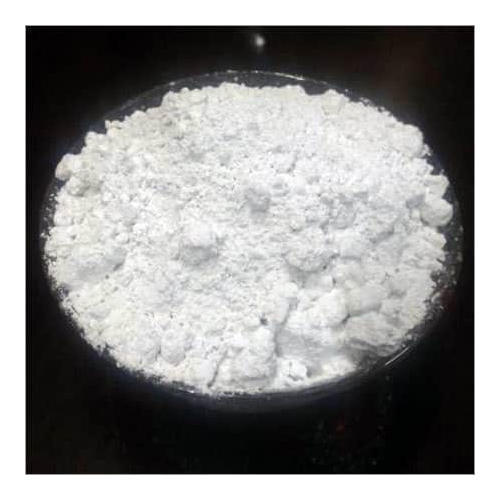Math Is Fun Forum
You are not logged in.
- Topics: Active | Unanswered
Pages: 1
#1 2025-03-14 16:45:34
- Jai Ganesh
- Administrator

- Registered: 2005-06-28
- Posts: 52,374
Bleaching Powder
Bleaching Powder
Gist
Bleaching powder, also known as calcium hypochlorite (Ca(ClO)2), is primarily used as a bleaching agent for textiles and paper, a disinfectant for water, and a sanitizer.
Summary
Swimming pools are a lifeline for all human aquaphiles who enjoy soaking in the cool splash during the hot and humid summer days. Who wouldn't want to spend some leisure time gazing at the poolside beauty or immersing themselves in the cool blue aqua-cover provided by swimming pools?
Behind the clear scene of a pool's blue waters are unseen efforts to keep the water of such a busy swimming pool crystal clear and fresh. So, what is it that consistently restores the pool's clarity and freshness?
It's a peculiar smelling white powder!
Do you know what that peculiar smelling cleaning powder is? Any ideas?
It is, indeed, 'Bleaching powder.'
Bleaching powder is used to remove stains and dirt and maintain the cleanliness of the pool. When it comes to cleaning stains, slippery surfaces, algal growths, and so on, it is almost like a saviour for any household. Not just that, bleaching powder is capable of much more!
But how exactly? Let's explore.
Bleaching Powder - Definition and Chemical Formula
Charles Tennant along with Charles Macintosh developed an industrial method for manufacturing ‘chloride of lime’ in the late 18th century. It was patented in 1799 and was extensively used during World War I for disinfecting wounds and trenches.
This was the first invention of bleaching powder. Calcium hypochlorite CaOCl2 is the main active ingredients of commercially available bleaching powder. It is quite stable at room temperature. It has the tendency to slowly decomposes in moist air, liberating chlorine gas which gives it its characteristic chlorine-like strong and pungent odour.
Chemical Formula:
* The composition of bleaching powder is Ca(OCl)2.CaCl2.Ca(OH)2.2H2O.
* The commercially available bleaching powder generally contains 15-25% of Ca(OH)2 and only about 35% of Cl2 available for oxidation.
* Bleaching powder, also known as chloride of lime, is a solid white powder, although the commercially available samples appear yellowish-white. Bleaching powder is also known by several other names like chlorine powder, chlorinated lime, chloride of lime, etc. and is used extensively for water treatment, and as a bleaching agent.
* Bleaching powder, when dissolved in water, forms an aqueous solution, which is basic in nature. Bleaching powder works on the principle of oxidation. The bleaching action of the bleaching powder is caused due to the presence of chlorine in it.
Details
Calcium hypochlorite is an inorganic compound with chemical formula Ca(ClO)2, also written as Ca(OCl)2. It is a white solid, although commercial samples appear yellow. It strongly smells of chlorine, owing to its slow decomposition in moist air. This compound is relatively stable as a solid and solution and has greater available chlorine than sodium hypochlorite. "Pure" samples have 99.2% active chlorine. Given common industrial purity, an active chlorine content of 65-70% is typical. It is the main active ingredient of commercial products called bleaching powder, used for water treatment and as a bleaching agent.
History
Charles Tennant and Charles Macintosh developed an industrial process in the late 18th century for the manufacture of chloride of lime, patenting it in 1799. Tennant's process is essentially still used today, and became of military importance during World War I, because calcium hypochlorite was the active ingredient in trench disinfectant.
Uses:
Sanitation
Calcium hypochlorite is commonly used to sanitize public swimming pools and disinfect drinking water. Generally the commercial substances are sold with a purity of 65% to 73% with other chemicals present, such as calcium chloride and calcium carbonate, resulting from the manufacturing process. In solution, calcium hypochlorite could be used as a general purpose sanitizer, but due to calcium residue (making the water harder), sodium hypochlorite (bleach) is usually preferred.
Organic chemistry
Calcium hypochlorite is a general oxidizing agent and therefore finds some use in organic chemistry. For instance the compound is used to cleave glycols, α-hydroxy carboxylic acids and keto acids to yield fragmented aldehydes or carboxylic acids. Calcium hypochlorite can also be used in the haloform reaction to manufacture chloroform. Calcium hypochlorite can be used to oxidize thiol and sulfide byproducts in organic synthesis and thereby reduce their odour and make them safe to dispose of. The reagent used in organic chemistry is similar to the sanitizer at ~70% purity.
Additional Information
Bleaching powder is mainly an essential item as a bleaching agent and as a disinfectant. The major use is in the paper industry, textile industry, and oil industry. In addition, the chemical industry is the major industrial consumer of this product. Sometimes it is also used as a source of chlorine in the preparation of chloroform. The product has good market potential. Bleaching powder is one of the widely used materials as a disinfectant. It has also got a huge demand as a bleaching agent.
The textile industry, paper industry along with the oil industries are the major consumers of bleaching powders. The chemical industries are also among the major consumers of this product. Other than the use as a bleaching agent and a disinfectant, it is also used in the preparation of chloroform.

It appears to me that if one wants to make progress in mathematics, one should study the masters and not the pupils. - Niels Henrik Abel.
Nothing is better than reading and gaining more and more knowledge - Stephen William Hawking.
Offline
Pages: 1